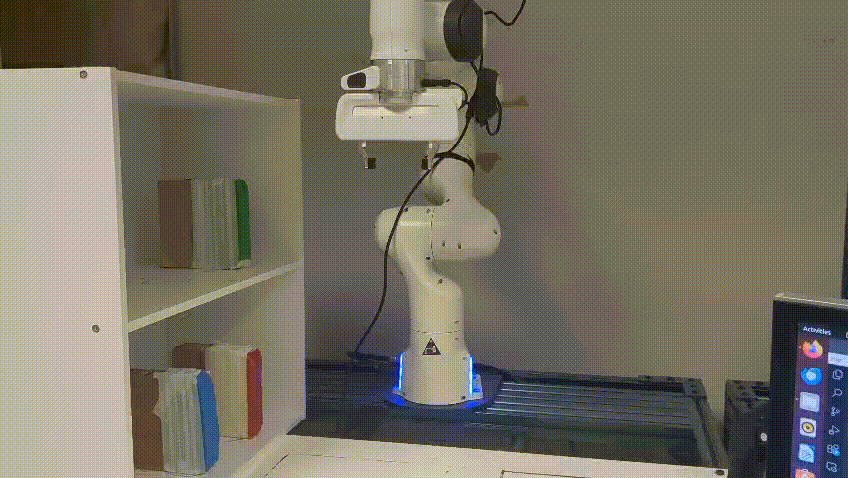Autonomous Shelf Organizer
Autonomous In-place Sorting of Items On Shelves SO(n)RT
Problem Statement
Develop an end-to-end robotic sortation system to identify shuffled objects (such as books, blocks) and sort them “in-place” without replacement.
Key Terms:
- In-place: Identify and move objects to intermediate or buffer locations
- Manipulate: Grip objects securely and move them safely considering virtual walls and shelf model
- Pre-defined sequence: Color-based sorting algorithm (blue, green, red) → (red, green, blue)
Solution Overview
The Autonomous Shelf Organizer (SO(n)RT) addresses the challenge of automated organization in cluttered environments. This system combines computer vision, robotic manipulation, and intelligent path planning to autonomously sort and organize items on shelves without human intervention.

System Architecture
The SO(n)RT system is built on ROS (Robot Operating System) and MoveIt! for motion planning and control. The architecture integrates multiple subsystems working in harmony:
- Perception Module: RGBD camera-based vision system for object detection and localization, updates sequence state in intermediate image retrieval positions
- Planning Module: Motion planning using MoveIt! for collision-free trajectory generation from index to index
- Sortation Module: Real-time min-swap sortation algorithm
- Finite State Machine: Moves between planning, robot control and sortation states
Technical Implementation
Computer Vision
Real-time object detection and segmentation is performed using an RGBD camera mounted on the end-effector. The vision pipeline utilizes OpenCV and HSV color space thresholding to identify and classify objects by color:
- Input: RGBD camera frames from end-effector camera
- Processing: HSV calibration and thresholding for color-based segmentation
- Output: Centroid information in camera frame for each detected color class
- Frame Transformation: Camera coordinates transformed to robot base frame for manipulation
The system subscribes to camera frames, processes them in real-time, and provides centroid coordinates for objects of each detected color (blue, green, red) in the camera coordinate frame.
Sortation Algorithm
- Is a min-swap, cyclic-sort algorithm for any predefined sequence
- Outputs a sequence of move instructions (pick and place indexes) for the control
- Checks camera frame after placing and updates the state of the sequence
Motion Planning and Control
The system employs MoveIt! RRT-Connect for optimal trajectory generation:
- Takes input indexes from the sortation algorithm
- Collision detection considering virtual walls, shelf model and the books themselves
- Path planning for reaching, grasping, and placing objects
- Dynamic replanning when obstacles are detected
- Grasp objects with simple open/close commands for the Franka
- Defaults to a go-to-pose operation if an optimal plan is not found in upper-bound time
Technologies & Tools
- ROS: Robot Operating System for middleware and communication
- MoveIt!: Motion planning framework for trajectory generation
- OpenCV: Computer vision library for image processing
- RGBD Camera: Depth-enabled vision sensor for 3D perception
- Python/C++: Programming languages for system implementation